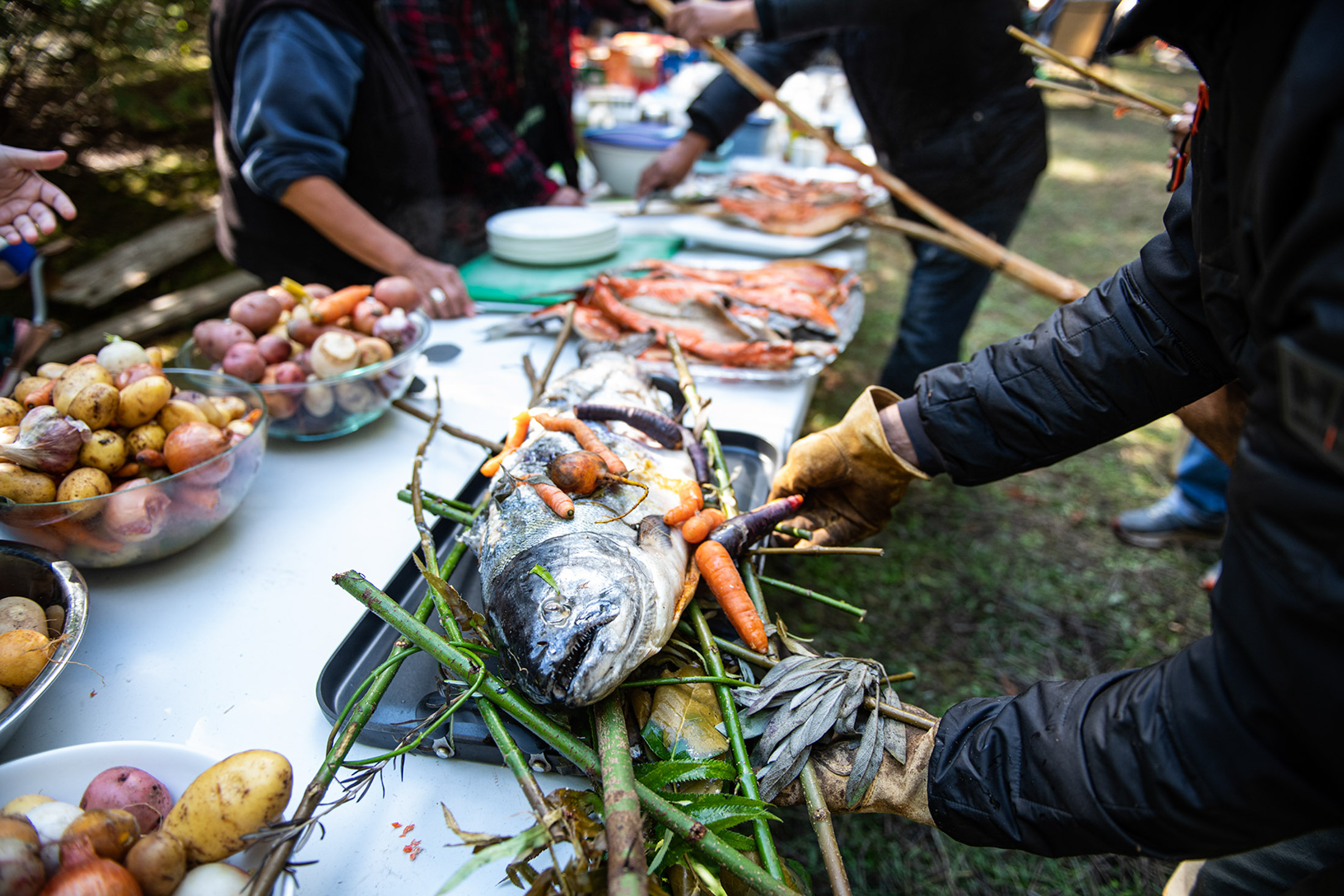Rain was predicted, but the clouds held off, allowing bright sun to filter down and settle in pools of platinum gold on the spongy forest floor.
A cedar fire, long and rectangular, contained within a perimeter of hefty stones, spun smoky grey tendrils into the air, entwining more than 85 people—Indigenous and settler—who gathered in early October for a Coast Salish pit cook. This traditional cooking method, once common among coastal Indigenous communities, hasn’t been practiced for a century.
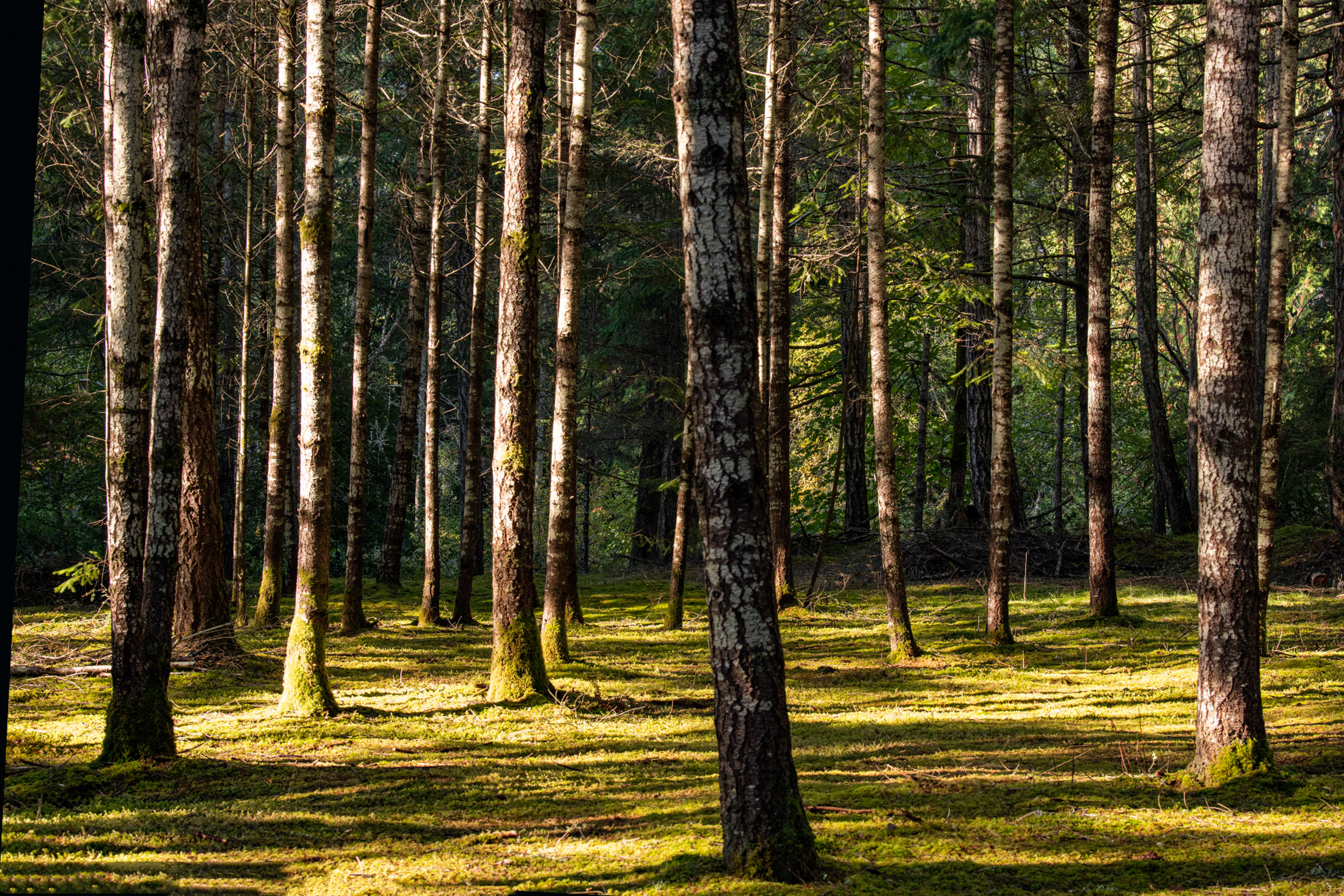
The Wildwood ecoforest is a rare ecosystem of first- and second-growth coastal Douglas firs, red cedar, bigleaf maple, flowering dogwood and arbutus trees.
The all-day event was organized by Stephanie Johnson, a Métis graduate student from Nanaimo, B.C., who ensured the pit cook, accompanied by an elaborate blanketing ceremony honouring Indigenous elders, was carried out in the Hul’q’umi’num language with traditional singing, drumming, gift-giving, storytelling and feasting. It reinforced Indigenous spiritual connections to the land, while serving as a step along the bumpy road to truth and reconciliation.
The pit cook was held in the traditional territory of the Stz’uminus people in the 31-hectare Wildwood ecoforest, 17 kilometres south of Nanaimo. Here, first- and second-growth coastal Douglas firs, as well as red cedar, bigleaf maple, flowering dogwood and arbutus trees grow, making Wildwood a rare and unique ecosystem. Plants and herbs like licorice fern, yerba buena, wild blackberries, and Grand fir flourish. These were collected and simmered in large, water-filled stainless steel pots among the crackling logs, and steeped into cups of surprisingly sweet ambrosia tea.
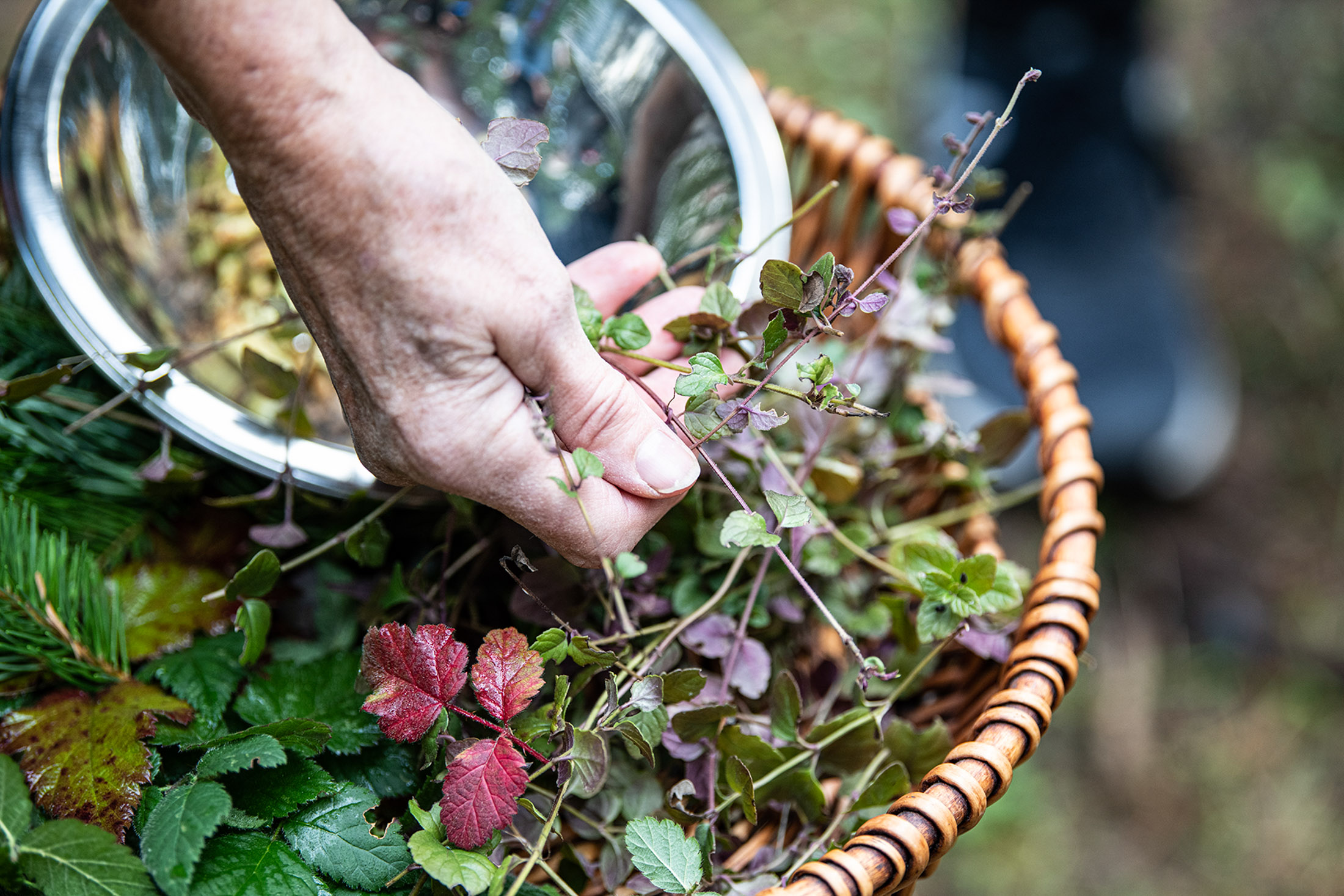
Plants and herbs like licorice fern, yerba buena , wild blackberries, and fir needles are simmered to make tea.
For several years, Johnson has focused her professional and academic work on integrating the Truth and Reconciliation Commission of Canada’s calls to action into settler culture. Just as Indigenous peoples have been forced to “walk in two worlds” for centuries under the yoke of colonialism, so too must settlers learn to balance on this high wire, “reimagining reconciliation as a daily practice,” Johnson says.
Settlers must first understand the deep connection Indigenous peoples have to the sea, sky and forests. “Indigenous worldviews must inform all future efforts to work together. That is true reconciliation,” Johnson says, wearing a flared red wool cape with Coast Salish-styled hummingbird designs. “People with traditional knowledge are the key to sustainability and climate change.”
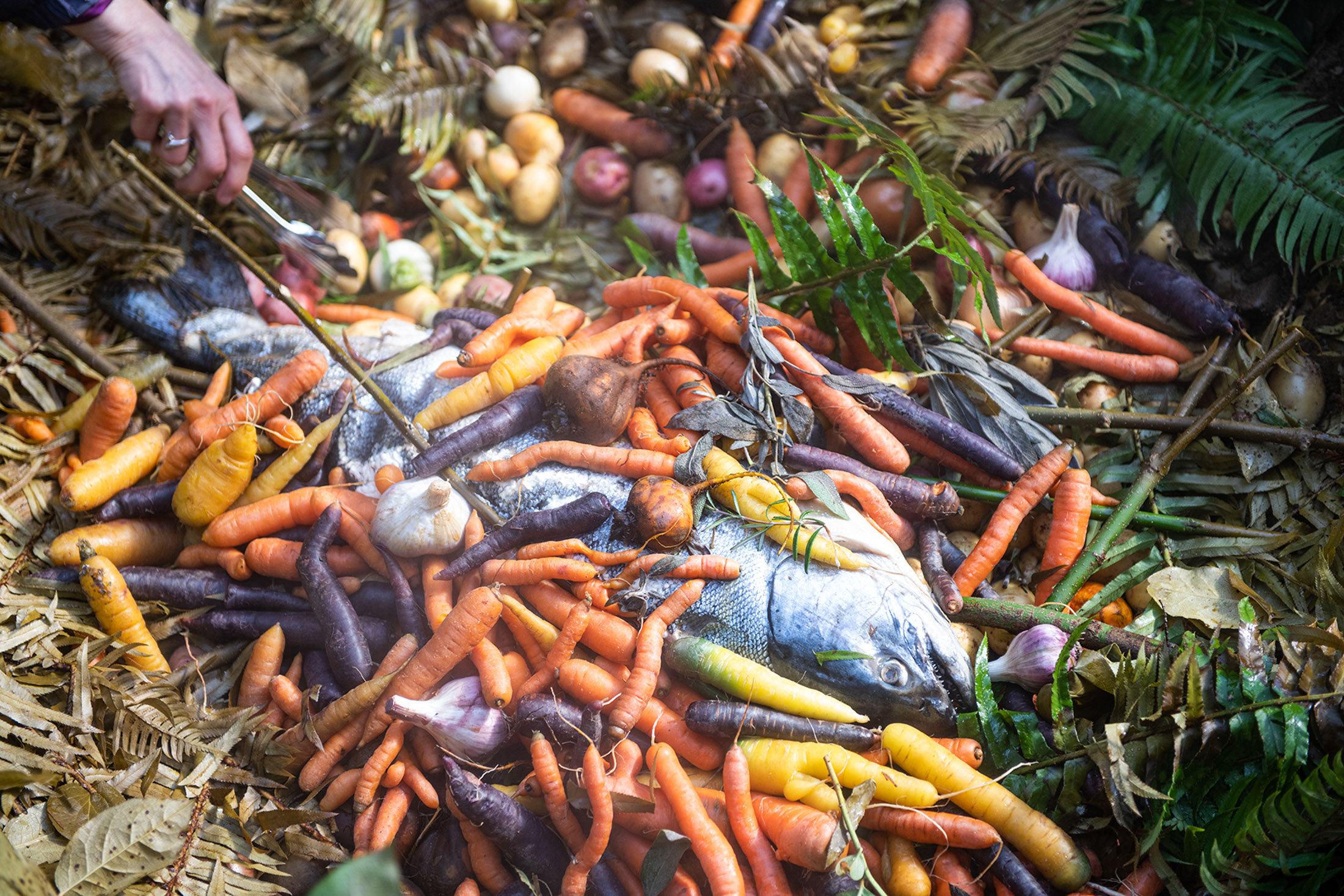
The pit cook is a traditional method of preparing locally gathered food.
The connection between nature and human runs so deep that Indigenous peoples regard the land and animals as a relative, says Lawrence Mitchell, or Tsumkwatun in Hul’q’umi’num, a knowledge keeper who drummed and sang traditional melodies at the pit cook.
Stz’uminus hereditary chief George Seymour, 67, called Squtwxulenuhw in Hulq’umi’num’, says it has been 100 years since such an authentic pit cook has been held in central Coast Salish territory. The celebration combined two pit cooking methods: underground and above-ground. Jay Rastogi of Victoria oversaw the creation of the underground pit, used to cook vegetables as well as a 14-kilogram salmon. Rastogi started to dig the hole for the underground pit at 5 AM, then placed rocks at the bottom, piled logs high and set them ablaze, slowly turning the stones red hot. Once the blackened logs had developed scales of white ash, they were removed with shovels.
The next steps were undertaken with military precision and speed, to ensure the rocks remained scorching. Armfuls of salal leaves and sword fern, t’eqe’ and sthxelum respectively in Hulq’umi’num’, were first thrown onto the stones, followed by more than 100 kilograms of layered golden beets, carrots, potatoes, turnips, garlic and beet greens. The remaining t’eqe’ and sthxelum formed the top layer. A long staff of freshly peeled wood was held in the middle of the vegetable layers, acting as a conduit for water, which was poured in to create steam. Finally, the pit was covered with burlap and canvas, and a layer of earth patted down. “The beauty of this was the way we came together as one family, as relatives, Indigenous and settler together,” says Johnson, who undertook the pit cook as part of her studies at Royal Roads University.
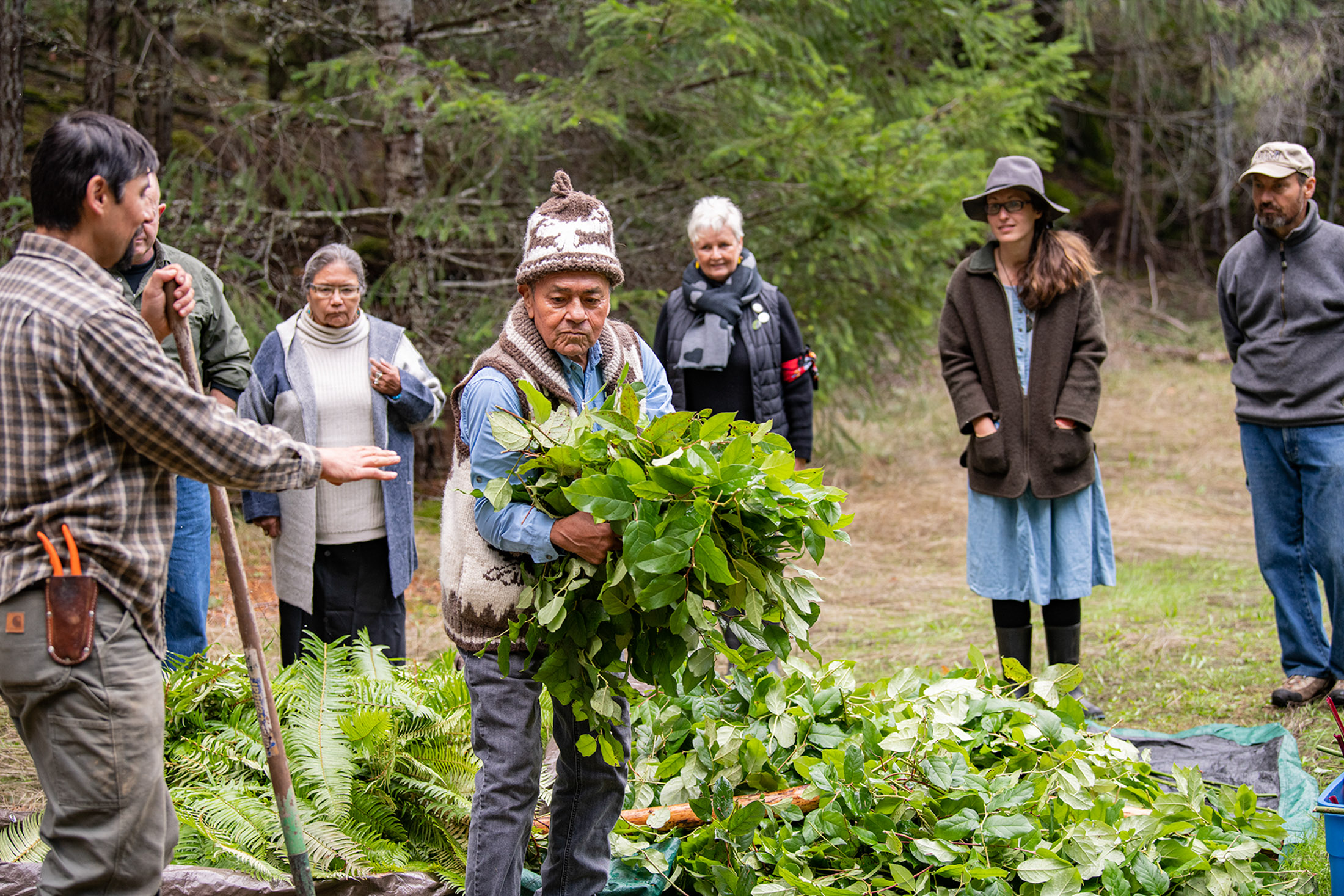
Stz’uminus elder Harvey Seymour lays down salal leaves, or t’eqe’ in Hulq’umi’num’, one of the first steps to creating an underground pit cook.
About an hour after the vegetables began cooking, the above-ground pit crew leapt into action. Silvery salmon, weighing about three kilograms each, were butterflied and attached to long, thick-skinned branches. Called pi’kwun, or “fish sticks” in Hulq’umi’num’, they leaned slightly over the flames, slow-cooking the robust pink flesh. The fish were ready when they sprouted pale yellow globules of fat like tiny fungi. Elders were served first, with everyone eventually plated with smoke-seasoned fish and al dente vegetables dug up from the pit.
While waiting for the food to cook, we sat on chairs or chiseled logs or tree stumps, listening to stories. A few elders were survivors of the residential school system, when Indigenous youngsters were kidnapped from their families and forced to attend religious-run institutions, described by the Truth and Reconciliation Comission as an act of cultural genocide. Neglect, sexual abuse, and mistreatment resulted in the death of more than 4,100 Indigenous children across Canada. Elder Philomena Williams, 77, or T’uwahwiye’ in Hulq’umi’num’, wearing a Cowichan sweater with two ferocious wolves woven into the design, spoke about her time in a residential school in the 1950s. The students, Williams says, became expert thieves because they were so hungry from the meagre, substandard food. “If they had peanut butter they would put half in another jar and add water to make it last longer,” Williams says. “We would go to the larder and get some of the peanut butter just so we could get something in our tummies.”
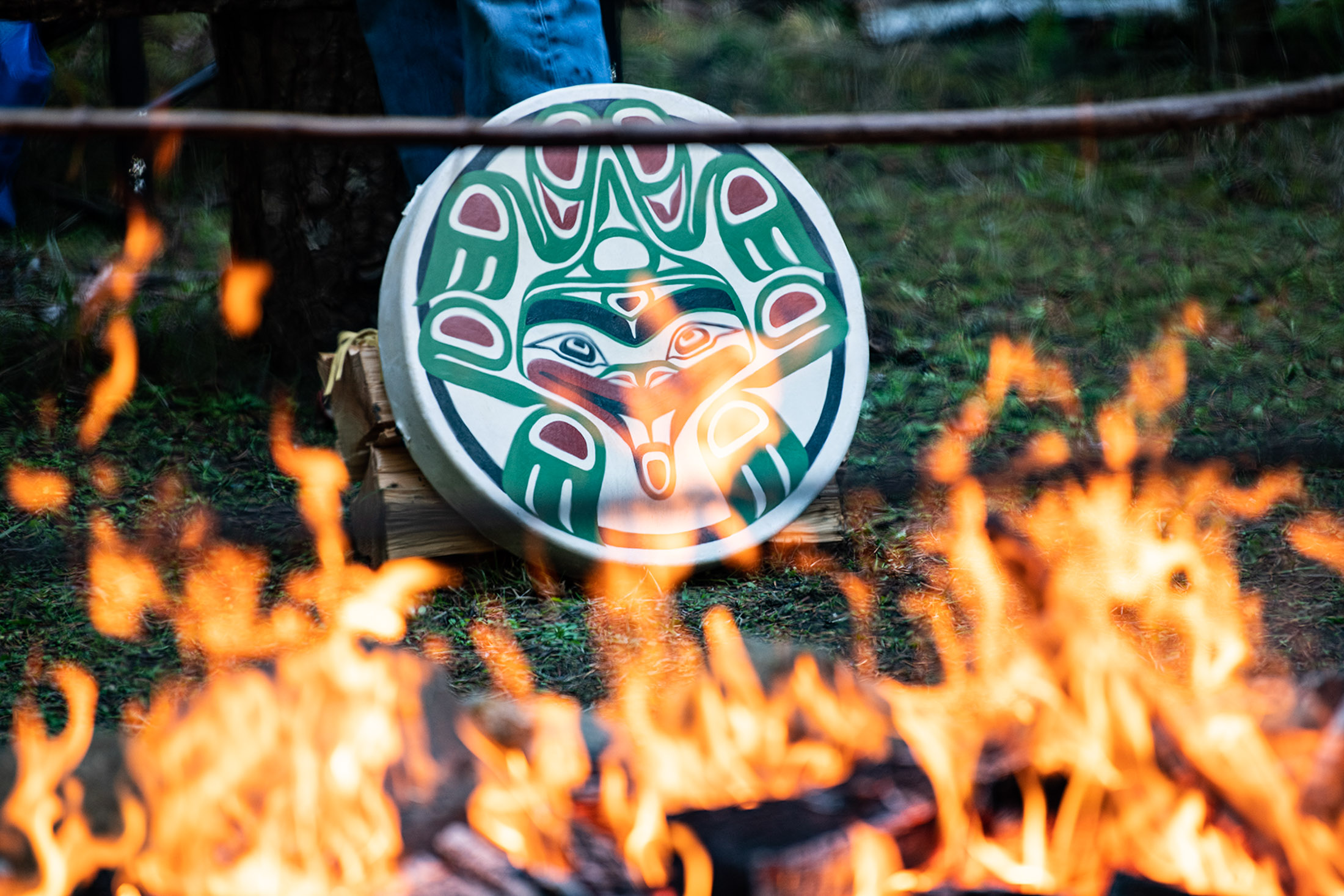
This drum, owned by Ted Cadwallader, features a frog, or wuxus in Hul’q’umi’num. Frog songs signal spring, rebirth, renewal and change.
Williams says that some of the children who were snatched from their families were allowed to return home when they were 12 or 13. By this time, their knowledge of the culture, as well as any sense of family, was lost. They felt disconnected—no longer part of the community, Williams says. Substance abuse was a way to cope. “It’s so sad for some of the ancestors who have passed on with grief and anger in their hearts.”
Williams also spoke about her husband Peter Williams, 93, who sat beside her at the pit cook, tucked under a blanket to ward off chills. She told stories from the 1960s of how Peter would go fishing for spring salmon, once bringing home a 62 ½ pounder. Back then, Williams says, the salmon run on the Nanaimo River to the spawning grounds would last two months. The water also teemed with coho salmon, cod, halibut and sturgeon. Now the spring salmon run might last 20 minutes, says Williams. She also mourned the cedar tree, with its fragrant scent and distinctive red wood and bark, used for medicine, canoes and clothing. Like the fish that once sustained Indigenous communities, these iconic trees are threatened due to climate change and commercial exploitation. “In 40 to 50 years our cedar trees will be lost,” Williams says.
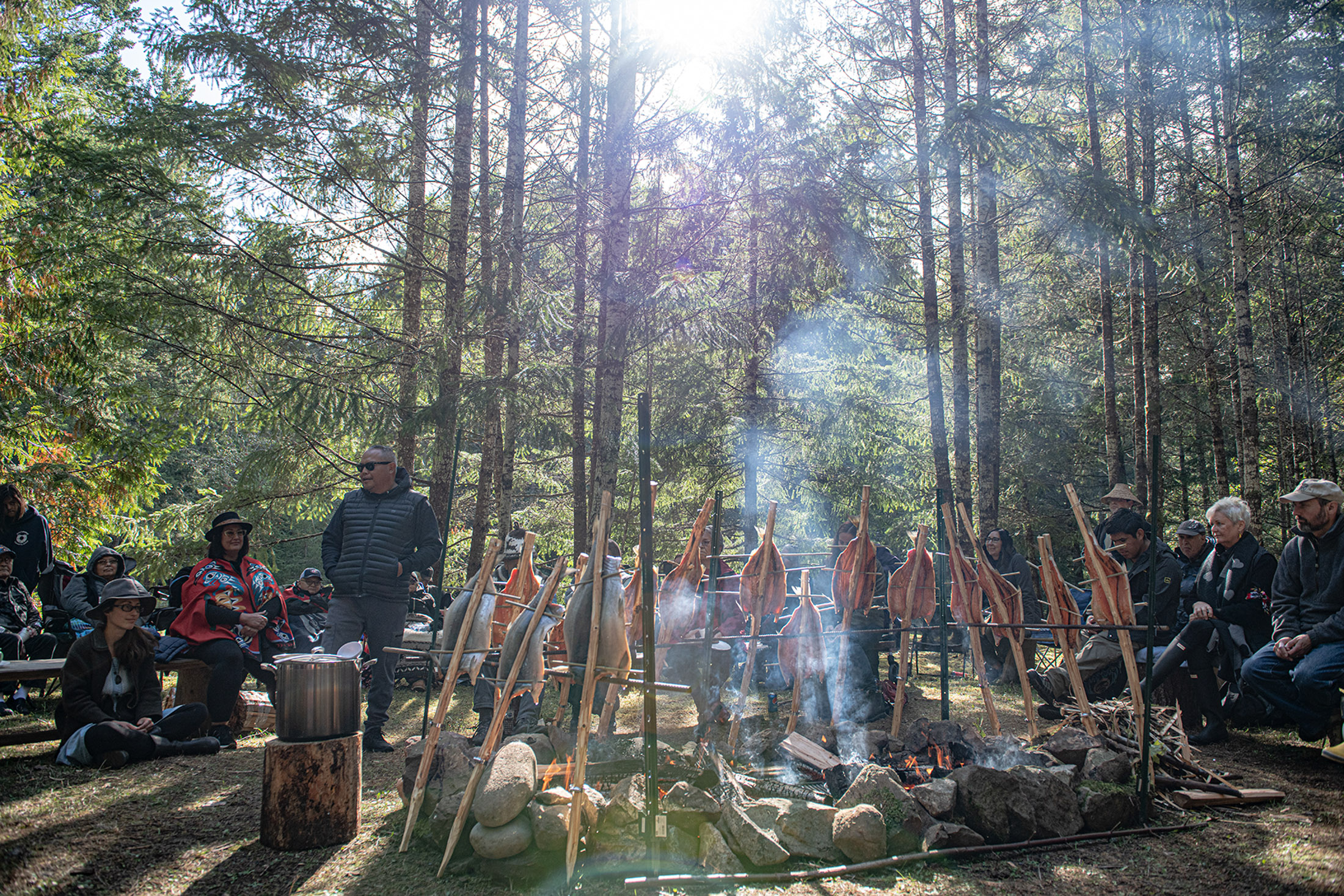
In the Stz’uminus culture, knowledge is passed down through oral tradition from elders to the young. One of the elders who received special acknowledgement at the pit cook was Dr. Luschiim Arvid Charlie, who wrote a book, Luschiim’s Plants—Traditional Indigenous Foods, Materials and Medicines, just released by Harbour Publishing. Co-authored by renowned ethnobotanist Dr. Nancy Turner of the University of Victoria, the book identifies, using scientific nomenclature, B.C. plants and their properties—encyclopedic knowledge accumulated through generations, including Luschiim’s father, Simon Charlie, a renowned carver and medicine man. Some of the plants recorded in the book, such as the blue-flowered camas bulb, provided nutrition for Coast Salish peoples for thousands of years. The book also records the properties of medicinal plants and trees for treating such maladies as infections, coughs and colds, burns, thrush and asthma, as well as for household items like diapers, deodorizer and shampoo.

The butterflied salmon is called pi’kwun, or “fish sticks,” in Hulq’umi’num’.
Luschiim learned not only from elders but by observing the natural world. For example, he discovered the healing and antibiotic properties of the Arbutus tree, qaanlhp in Hulq’umi’num’, when he spied a wounded deer being helped by a herd member. Another deer chewed qaanlhp leaves, then spit the masticated mass onto the injury. The hurt deer recovered. The bark and leaves of qaanlhp are also used to treat coughs and colds, Luschiim writes.
To honour the documentation of such precious, ancient knowledge, Luschiim and Turner were presented with traditional Coast Salish Speaker blankets. Elder Harvey Seymour, 72, called S-eshiye’ in Hulq’umi’num’, the older brother of George Seymour, says that giving a traditional handwoven blanket “makes people feel whole,” while expressing the community’s love, honour and respect.
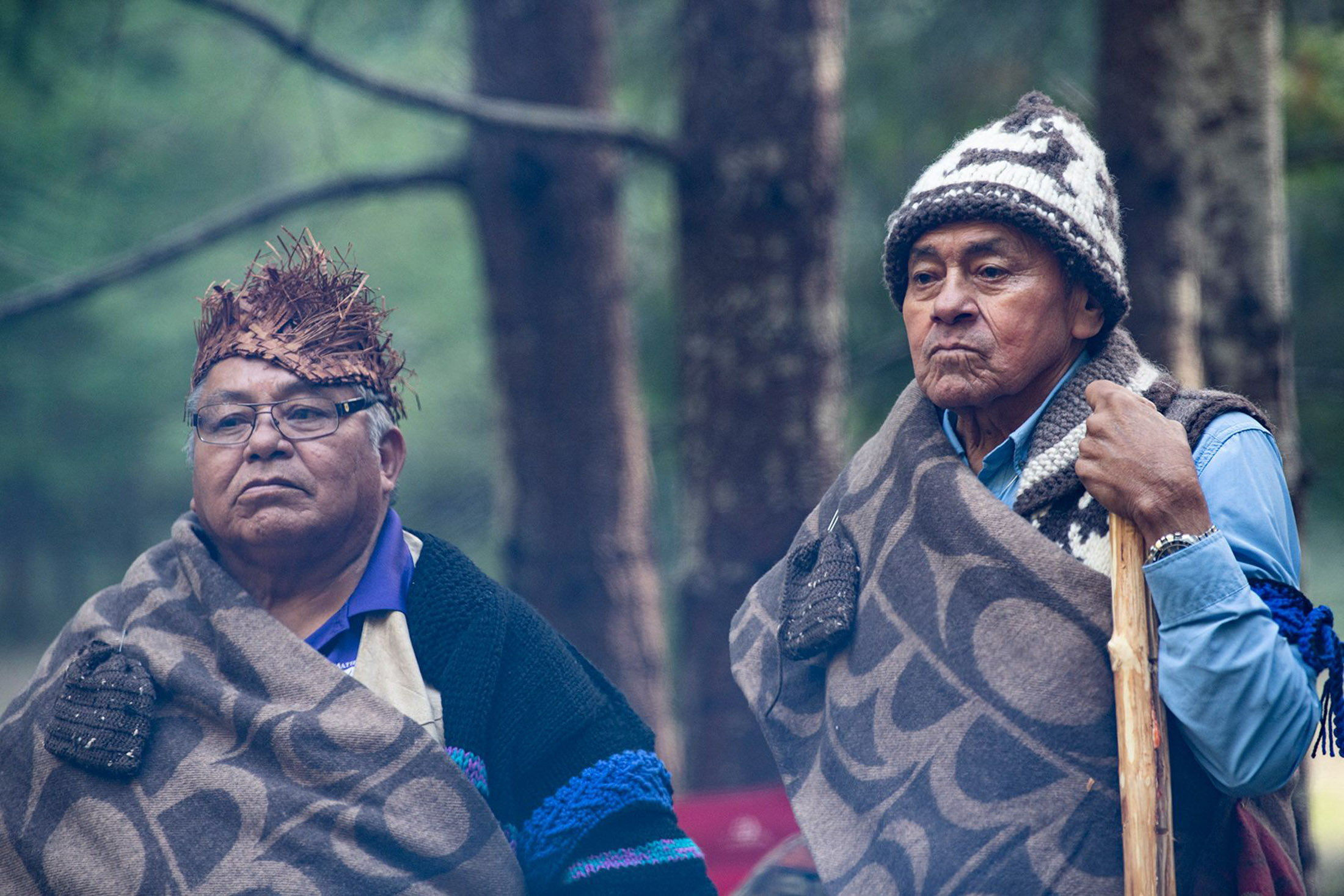
Stz’uminus elders George and Harvey Seymour (L-R) were honoured with blankets, which were folded and covered their bodies from left to right, covering the heart to keep the positive in and the negative out.
As environmental degradation, the loss of salmon and other keystone species, and weather extremes roil the Pacific Northwest, Luschiim’s book brings traditional knowledge to the fore, key to mitigating climate change, says Johnson. “There is a sense of urgency to bring back traditional ways.”
As the sun descended towards the Western horizon, the fire crumbled into ash, leftover salmon and vegetables were claimed, and tables and chairs folded and put away. Exhausted but happy, Johnson was contemplative. The Pit Cook, she said, had been a “beautiful expression of walking together to connect back to the land that will nourish us spiritually, emotionally and physically—as one family.”
Read more Community stories.

